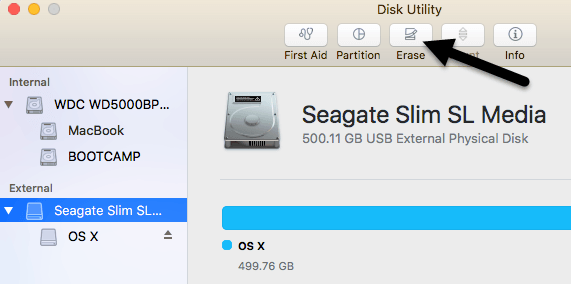
- HOW TO INSTALL OS X AFTER REPLACING HARD DRIVE UPDATE
- HOW TO INSTALL OS X AFTER REPLACING HARD DRIVE LICENSE
- HOW TO INSTALL OS X AFTER REPLACING HARD DRIVE WINDOWS 8
- HOW TO INSTALL OS X AFTER REPLACING HARD DRIVE DOWNLOAD
HOW TO INSTALL OS X AFTER REPLACING HARD DRIVE UPDATE
To verify if you downloaded or installed the Windows 10 Anniversary Update Right click the MediaCreationTool.exe file then click If you are prompted to enter a product key, click 'I don't have a key' and 'Do this later'
HOW TO INSTALL OS X AFTER REPLACING HARD DRIVE WINDOWS 8
So, there is no need to know or get a product key, if you need to reinstall Windows 10, you can use your Windows 7 or Windows 8 product key or use the reset function in Windows 10.

HOW TO INSTALL OS X AFTER REPLACING HARD DRIVE LICENSE
The Windows 7 or Windows 8 genuine license you were previously running will be exchanged for a diagnostics key.Īnytime you need to reinstall Windows 10 on that machine, just proceed to reinstall Windows 10. Questions? Comments? Have a fix? Post them below orīe sure to check us out on Twitter and the CNET Mac forums.When you upgraded from a previous version of Windows or receive a new computer preinstalled with Windows 10, what happened is the hardware (your PC) will get a digital entitlement, where a unique signature of the computer will be stored on Microsoft Activation
HOW TO INSTALL OS X AFTER REPLACING HARD DRIVE DOWNLOAD
This will be required to log in to the App Store and download the Mountain Lion installer when booted to the Recovery drive. Keep in mind that if you need to do this procedure, then since your computer did not ship with Mountain Lion, you will need a valid Apple ID that is associated with a Mountain Lion purchase. Select it and continue booting, and you should load to the standard OS X Tools window, which you can use to format your internal drive and reinstall OS X. With the recovery drive created, attach it to your Mac and reboot with the Option key held down, and you should see it appear as an option in the boot menu. If you had the foresight to do so with the latest version of OS X, then you might have such a drive around somewhere however, if not then you will need to access a system running Mountain Lion and use Apple's Recovery Disk Assistant to mirror the recovery volume to the drive. This procedure will require you to install and upgrade, but if you wish to install only the latest version of OS X freshly, then you will need to create an external recovery drive to use with your system. After installing this version, you will then need to update it, and access the Mac App Store where you can download a previously purchased license for Mountain Lion to install. The first is to install OS X 10.6 Snow Leopard on your computer, which is on the gray installation discs that came with your system, or on a retail Snow Leopard installation DVD. In these cases, then you have two options. But when replacing a faulty drive, this might not be doable. In the event of swapping out a healthy drive with a new one, you can put the old drive in an external enclosure, boot off of it, and then use a cloning tool to mirror its contents to the new drive. If your system was built before 2010, then even though it might run the latest OS X versions, it will not have Internet Recovery as an option, which can result in problems if you have swapped out the hard drive, or experience problems with it and wish to reinstall freshly. This mode is convenient to have, since errors with the hard drive or a blank hard drive could prevent the conventional recovery partition from working. New Mac systems built in 2010 and later support an Internet Recovery mode, which can be used to download the boot image generally stored on the OS X Recovery partition so you can run diagnostics.


After purchasing a new hard drive or managing a corrupt one on an older Mac, you can install your current version of OS X even though you might not have a working Recovery option (on the drive or through Internet Recovery) present on your system.


 0 kommentar(er)
0 kommentar(er)
